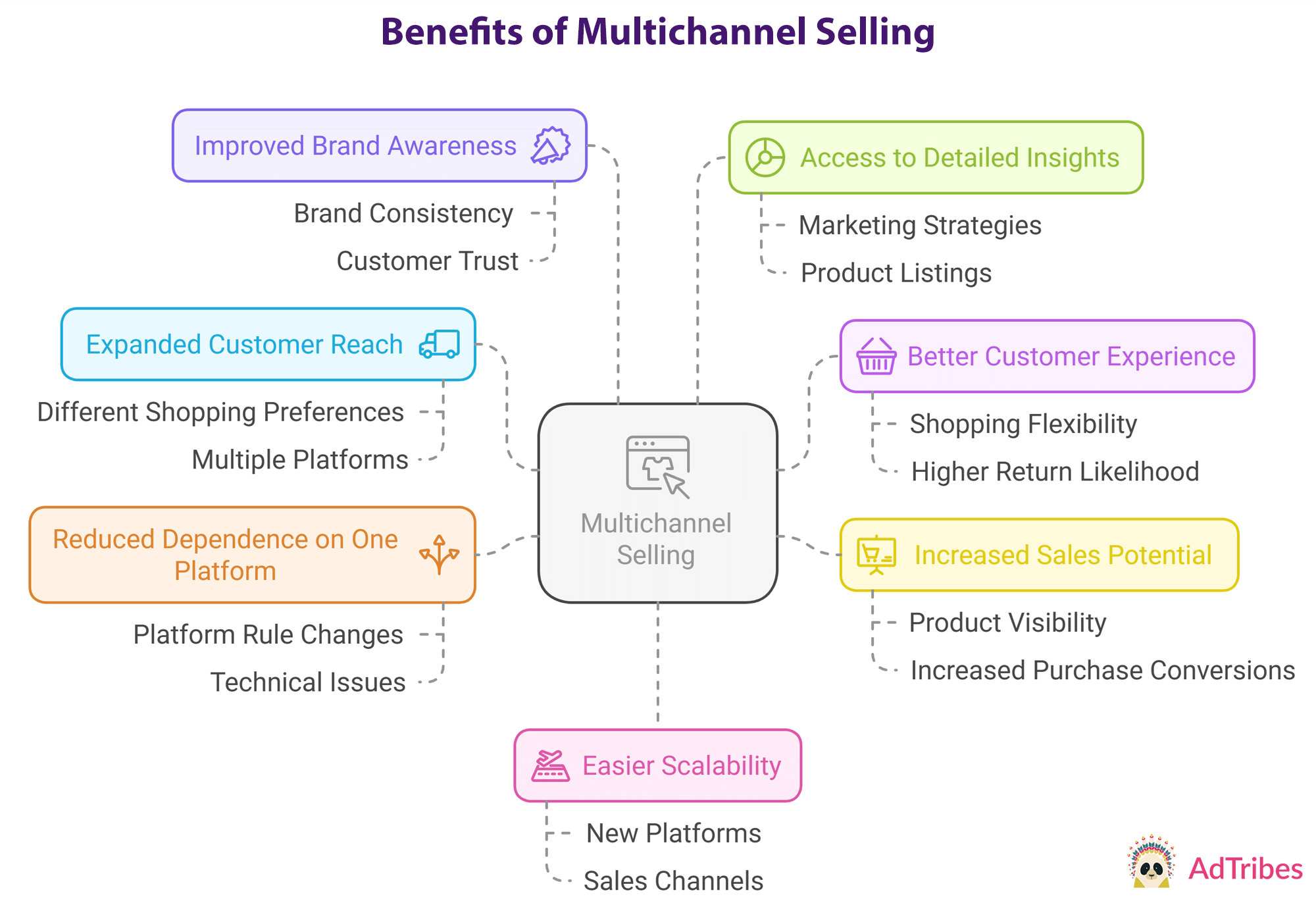From Amazon to ASOS: Ecommerce Case Studies That Inspire Your Growth with Cmsmart Tools
In addition to experiencing it yourself, learning from previous successes is also a way for you to learn from your own experience. In this article, we analyze 10 typical ecommerce business examples that you can refer to and draw lessons for yourself.
- By
- 3493 views
- 0 reply
TABLE OF CONTENTS
"I Knew My Store Could Do Better...
But I Didn't Know How"
That's what one of our clients, Jessica, told us. She was running a small mug store on WooCommerce—sales were okay, but stuck.
Until she discovered personalization.
Until she discovered Cmsmart.
Fast-forward 30 days:
- ✅ Her store was redesigned with AI product options
- ✅ Customers could design their own mugs with 3D preview
- ✅ AOV jumped by 42% — and she finally felt in control
Want to learn how she did it (and how you can too)?
🎓 Join our FREE 30-Day Email Course:
"Personalize, Launch & Scale – The Smart Ecommerce Way"
You'll get:
- ✔ 1 lesson a day, straight to your inbox
- ✔ Real store examples, demos & playbooks
- ✔ No tech jargon. Just strategy that works.
Join thousands of store owners learning how to scale smarter.
🎉 You're In! Thank You!
We've received your information and you're now part of our smart ecommerce journey.
Please check your inbox – your first email from the 30-Day Course is on its way!
📩 Didn't see it? Check your spam or promotions tab and mark us as safe.
We're excited to help you personalize, launch, and scale your store – the smart way.
TABLE OF CONTENTS
Related Post
Imagine a world where your products are just a click away for customers, regardless of where they choose to shop. According to a recent report by Statista, a staggering...
Imagine doubling your conversion rates simply by understanding and implementing the latest trends in eCommerce - sounds exciting, right? In a 2022 report, it was highlighted that the global...
Understanding Your Target Audience Who Is This Tutorial For? Whether you’re a custom bag entrepreneur, a merchandising manager, or a WooCommerce developer setting up stores for your clients, this guide is...
Other Usefull Contents
You can see many success stories from our customers, and you may be one of them in the future












Unlocking eCommerce Success: Why Learning from Industry Leaders Matters
The eCommerce landscape is constantly evolving, offering tremendous opportunities for businesses to grow and connect with customers worldwide. However, many new entrants jump into the market without fully understanding the complexities, leading to costly mistakes and missed opportunities.
Learning from the most successful eCommerce companies provides valuable insights into winning strategies, innovative models, and best practices. This guide analyzes 10 of the top-performing eCommerce businesses to help you draw actionable lessons and apply them to your own store or project.
Each case study focuses on what makes the brand successful—from customer-centric approaches and disruptive models to exceptional service and global expansion. Throughout, we link these insights to practical ways Cmsmart’s solutions like the Online Designer and Cmsmart Store can empower your business, especially if you are leveraging WordPress and WooCommerce for your eCommerce development.
Why Study These Brands?
Learn proven tactics that drive traffic, conversions, and loyalty.
Understand diverse business models from B2B to direct-to-consumer.
See how technology and customer experience create competitive advantages.
According to Statista’s eCommerce overview, global eCommerce sales are projected to reach $8.1 trillion by 2026, highlighting the importance of solid strategies in a crowded marketplace.
This tutorial is designed for entrepreneurs, SMB owners, and developers who want to build or scale an eCommerce store with insights from the best and practical ways to leverage Cmsmart’s platforms.
For deeper insights into the evolving marketplace, explore the Forrester report on the future of B2B commerce.
What is an E-Commerce Business?
E-commerce, short for electronic commerce, is the practice of buying and selling products or services over the Internet. It enables businesses and individuals to conduct transactions anytime, anywhere, using devices such as computers, smartphones, and tablets.
E-commerce covers a wide range of activities including online retail, auctions, ticketing, and even banking. It has become a critical strategy for businesses seeking to expand their reach and streamline sales processes.
According to Forbes, e-commerce sales worldwide are expected to surpass $6.5 trillion by 2023, reflecting the rapid growth and adoption of online shopping.
Key Elements of E-Commerce
Online storefronts: Websites or platforms where customers browse and purchase products.
Payment processing: Secure methods to complete transactions, such as credit cards, PayPal, or digital wallets.
Order fulfillment: Processes that handle packaging, shipping, and delivery.
Customer service: Support channels that assist buyers before, during, and after purchase.
Cmsmart’s Role in E-Commerce
Cmsmart offers robust solutions built on WordPress and WooCommerce to help you create customizable and scalable online stores. With tools like the Online Designer, you can empower customers to personalize products directly, boosting engagement and sales.
Explore Cmsmart’s comprehensive e-commerce development services to build your own successful online business: Cmsmart WooCommerce Development.
Types of E-Commerce Business Models
Understanding different e-commerce business models is essential to tailor your strategy and platform effectively. Here are the primary models commonly used today:
Business to Business (B2B)
In the B2B model, businesses sell products or services directly to other businesses, governments, or organizations. Orders are typically larger and involve long-term contracts.
Business to Consumer (B2C)
This model involves businesses selling directly to individual consumers. It is the most popular and includes retail stores, subscription services, and digital products.
B2C platforms need to prioritize user experience, mobile responsiveness, and marketing to engage a broad audience.
Consumer to Consumer (C2C)
In C2C, individuals sell to other individuals, usually through online marketplaces. This model reduces barriers to entry but can involve quality and trust challenges.
Examples include eBay and Etsy, where platforms benefit from transaction fees.
Consumer to Business (C2B)
C2B reverses traditional commerce by having individuals offer products or services to businesses. Freelance platforms like Upwork exemplify this model.
Why Choose Cmsmart for Your Business Model?
Cmsmart solutions are flexible enough to support all these e-commerce models. Whether you run a B2B portal with multi-vendor support, a B2C retail store with product personalization, or a marketplace, Cmsmart’s Online Designer and WooCommerce Store enable seamless operations tailored to your needs.
Here is Section 4: Amazon – Mastering Customer Centricity, ready for Canva with embedded links and actionable insights:
Amazon – Mastering Customer Centricity
Amazon stands as the unrivaled leader in e-commerce by placing the customer at the core of its business. Its success comes from relentlessly focusing on customer needs and delivering an exceptional shopping experience.
Business Challenge and Solution
Amazon faced the challenge of catering to a massive and diverse customer base while ensuring convenience and trust. Their solution involved:
Designing a user-friendly interface with personalized product recommendations based on browsing and purchase history.
Offering fast, reliable shipping options, including Prime membership for expedited delivery.
Providing exceptional customer service with easy returns and 24/7 support.
Cmsmart Tools to Enhance Personalization and Customer Experience
You can replicate Amazon’s customer-centric approach by leveraging Cmsmart’s powerful tools:
Use the Cmsmart Online Designer to offer personalized product customization with live previews, boosting engagement and average order value.
Deploy Cmsmart Store built on WooCommerce for flexible storefront customization and client-specific pricing strategies.
Actionable Takeaways for Your Store
Conduct regular market research using surveys and analytics to understand customer pain points and preferences.
Implement personalized product recommendations and intelligent search features.
Simplify your return and refund processes to build trust.
Offer multi-channel customer support to resolve issues quickly.
Shopify – Simplifying Ecommerce for Entrepreneurs
Shopify transformed the eCommerce landscape by providing an intuitive, easy-to-use platform that empowers entrepreneurs of all sizes to launch and manage online stores without deep technical knowledge.
Key Success Factors
A simple onboarding process with guided setup and customizable themes.
Extensive app marketplace for payment gateways, shipping, marketing, and analytics.
Strong focus on mobile optimization and user experience.
Reliable hosting and security built into the platform.
How Cmsmart Enables Easy-to-Use Custom Stores
While Shopify is popular for ease of use, Cmsmart provides a highly customizable alternative built on WordPress and WooCommerce, allowing greater control:
Cmsmart’s Online Designer adds product personalization features.
Cmsmart Store supports complex B2B workflows, including multi-vendor setups and custom pricing.
Complete ownership of your site and data versus Shopify’s hosted model.
Practical Tips to Streamline Setup and Management
Choose a platform with easy-to-navigate dashboards and tutorials.
Utilize drag-and-drop builders and pre-built templates for faster launch.
Integrate with popular payment and shipping providers for smooth checkout.
Regularly update your store based on user feedback and analytics.
Warby Parker – Disrupting with Direct-to-Consumer Model
Warby Parker revolutionized the eyewear industry by bypassing traditional retail channels and offering high-quality, stylish glasses directly to consumers at affordable prices.
Business Challenge and Innovative Solution
Addressed high markups and limited access in traditional retail.
Adopted a direct-to-consumer (DTC) model to control pricing and customer experience.
Leveraged online platforms to reach a wider audience with a seamless shopping experience.
Cmsmart Solutions for Unique Branding and Control
Cmsmart empowers businesses aiming to disrupt their industries by providing:
Customizable storefronts built on WooCommerce to control branding and customer engagement.
The Online Designer to offer personalized product options.
Tools for managing customer data and personalized marketing campaigns.
Steps to Build Your Disruptive Model
Identify inefficiencies in your market and create solutions that reduce costs or improve convenience.
Build direct relationships with your customers through personalized experiences and transparent pricing.
Use technology to simplify the buying process and enhance product customization.
Zappos – Creating Loyalty Through Customer Service
Zappos built its reputation on delivering exceptional customer service, fostering deep customer loyalty and creating a standout brand in the competitive eCommerce space.
How Zappos Approached Customer Service
Developed a customer-centric culture focused on exceeding expectations.
Empowered customer service representatives to resolve issues proactively and efficiently.
Offered a hassle-free return policy to build trust and reduce purchase hesitation.
Cmsmart Features Supporting Customer Engagement
Cmsmart platforms enable you to replicate Zappos’ success by offering:
Seamless integration of live chat and multi-channel support.
Tools for easy return management and customer communication.
Customer data tracking for personalized marketing and follow-up.
Customer Service Best Practices You Can Adopt
Invest in thorough training to build empathetic, knowledgeable service teams.
Empower employees with authority to resolve issues quickly.
Simplify returns and make the process transparent and easy.
Actively collect and analyze customer feedback for continuous improvement.
Glossier – Building a Community-Driven Brand
Glossier’s rapid rise in the beauty industry stems from its focus on cultivating a passionate and engaged community around its products and brand.
Engaging Customers as Co-Creators
Actively involves customers in product development through surveys and feedback.
Encourages user-generated content on social media to build authenticity.
Creates exclusive perks and loyalty programs to foster belonging.
Cmsmart Integrations for Social Proof and Engagement
Cmsmart tools help businesses build similar communities by offering:
Features to showcase customer reviews and testimonials.
Integration with social media for user-generated content sharing.
Customizable loyalty and rewards systems.
How to Foster Brand Loyalty Through Community
Maintain open and transparent communication with your customers.
Host events and online forums to facilitate customer interaction.
Recognize and reward your most active brand advocates.
Use customer insights to continuously refine products and marketing.
Airbnb – Embracing the Sharing Economy
Airbnb transformed the hospitality industry by creating a platform that connects travelers with hosts, unlocking the value of underutilized assets and creating new income streams for individuals.
Unlocking New Value Through Sharing
Offered unique, authentic lodging experiences beyond traditional hotels.
Enabled individuals to monetize spare rooms and properties.
Built trust through verification processes and customer reviews.
Cmsmart’s Multi-Vendor Solutions for Marketplace Models
Cmsmart supports marketplace-style businesses like Airbnb by providing:
Multi-vendor management with easy vendor onboarding.
Order and commission tracking for diverse providers.
Tools for reviews and ratings to build trust and transparency.
Trust and Verification Tactics
Implement robust verification to protect users and providers.
Foster a review system to encourage accountability.
Provide clear communication channels and customer support.
Patagonia – Leading with Sustainability
Patagonia has become synonymous with environmental stewardship and ethical business practices in the retail industry. Their commitment to sustainability resonates strongly with environmentally conscious consumers and has helped build a loyal customer base.
Commitment to Eco-Friendly Practices
Patagonia integrates sustainability at every level:
Uses organic and recycled materials in product manufacturing.
Promotes fair labor practices across their supply chain.
Invests in environmental activism and conservation efforts.
Publishes transparent sustainability reports and impact assessments.
How Cmsmart Supports Sustainable Product Customization
Cmsmart enables businesses to align with eco-conscious customers by:
Offering customizable product options to reduce waste through made-to-order production.
Providing tools to highlight sustainable product features and certifications.
Supporting transparent communication with customers via customizable product pages.
Communicating Sustainability to Customers
Share stories about sourcing and production ethics.
Engage customers through educational content about sustainability.
Encourage participation in recycling or product repair programs.
Highlight certifications such as Fair Trade or Global Organic Textile Standard (GOTS).
Dollar Shave Club – Engaging Content Marketing
Dollar Shave Club gained rapid success with a viral marketing video that combined humor and storytelling to showcase their affordable razor subscription service. Their content strategy captured attention in a saturated market.
Creating Viral and Relatable Campaigns
Developed a clear, compelling brand message.
Used humor and relatable scenarios to engage viewers.
Created content tailored to multiple platforms, including social media and video sharing sites.
Encouraged user-generated content and testimonials.
Cmsmart Tools for Multimedia and Campaign Management
Cmsmart helps businesses create engaging campaigns by offering:
Integration with social media platforms for sharing and promotion.
Tools for creating personalized marketing content and offers.
Features for collecting and showcasing customer reviews.
Content Marketing Strategies for Ecommerce
Develop a consistent brand voice aligned with your target audience.
Use storytelling to build emotional connections.
Optimize content format per platform to maximize reach.
Leverage customer testimonials to build trust.
Casper – Seamless Omni-Channel Experience
Casper blends online and offline retail channels to deliver a seamless shopping experience, catering to diverse customer preferences.
Integrating Online and Offline Channels
Ensures consistent branding and messaging across all touchpoints.
Offers in-store product trials with online purchase options.
Syncs customer data for personalized recommendations.
Cmsmart Features for Unified Customer Journeys
Supports multi-channel integration for consistent customer profiles.
Enables branded client dashboards accessible across devices.
Provides tools for tracking customer interactions and preferences.
Enhancing Customer Convenience
Offers click-and-collect or in-store pickup options.
Provides flexible shipping and return policies.
Uses data analytics to refine marketing and product strategies.
ASOS – Global Expansion
ASOS achieved worldwide success by carefully localizing its offerings and marketing strategies for different regions.
Strategies for International Growth
Conducts in-depth market research on cultural and legal factors.
Localizes websites, languages, and payment methods.
Partners with reliable logistics providers for smooth shipping.
Builds localized social media presence and influencer partnerships.
Cmsmart’s Multi-Language and Multi-Currency Capabilities
Enables stores to support multiple currencies and languages.
Allows product catalogs tailored for regional preferences.
Supports region-specific promotions and offers.
Tips for Effective International Ecommerce
Prioritize compliance with local laws and regulations.
Use localized marketing and customer engagement tactics.
Maintain transparent shipping policies with accurate delivery times.
Conclusion
The success stories of these 10 eCommerce giants show that a deep understanding of customers, innovative business models, and leveraging technology are key to thriving online. Whether you’re a small entrepreneur or managing a large enterprise, adopting proven strategies and using powerful tools like Cmsmart Online Designer and Cmsmart Store can help you build a scalable, engaging, and profitable online business.
By focusing on personalization, seamless user experience, sustainability, and global outreach, you can stay competitive and meet evolving customer expectations.
For tailored eCommerce development solutions and expert support, visit Cmsmart or contact us at [email protected].